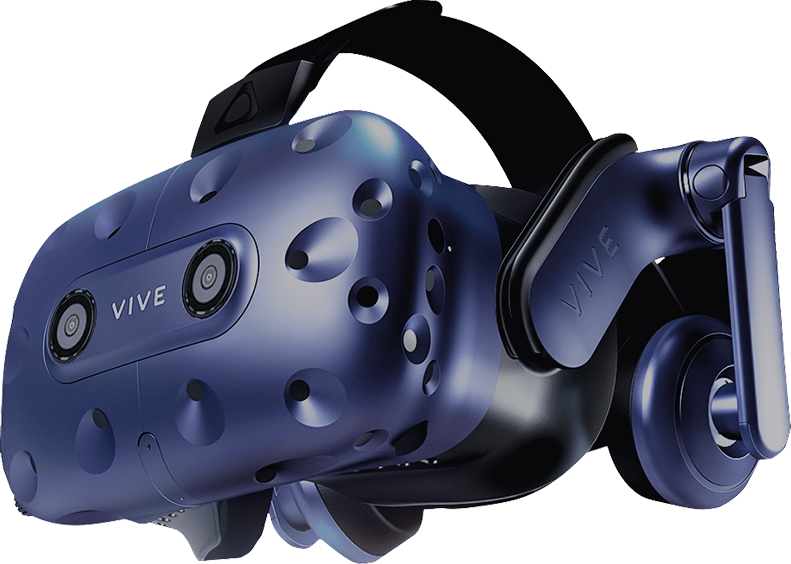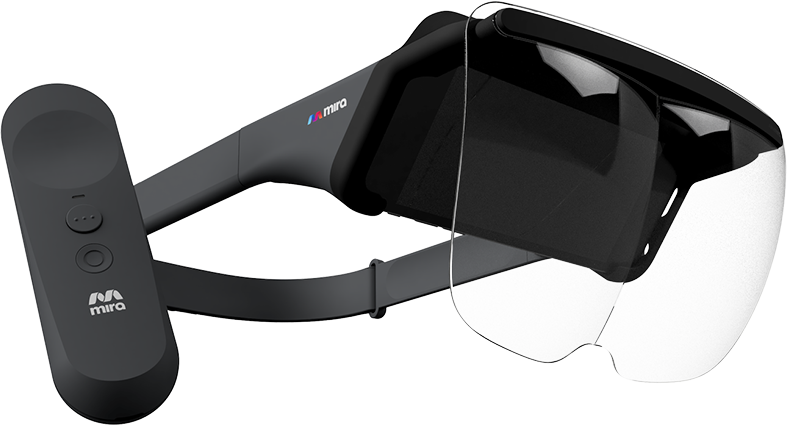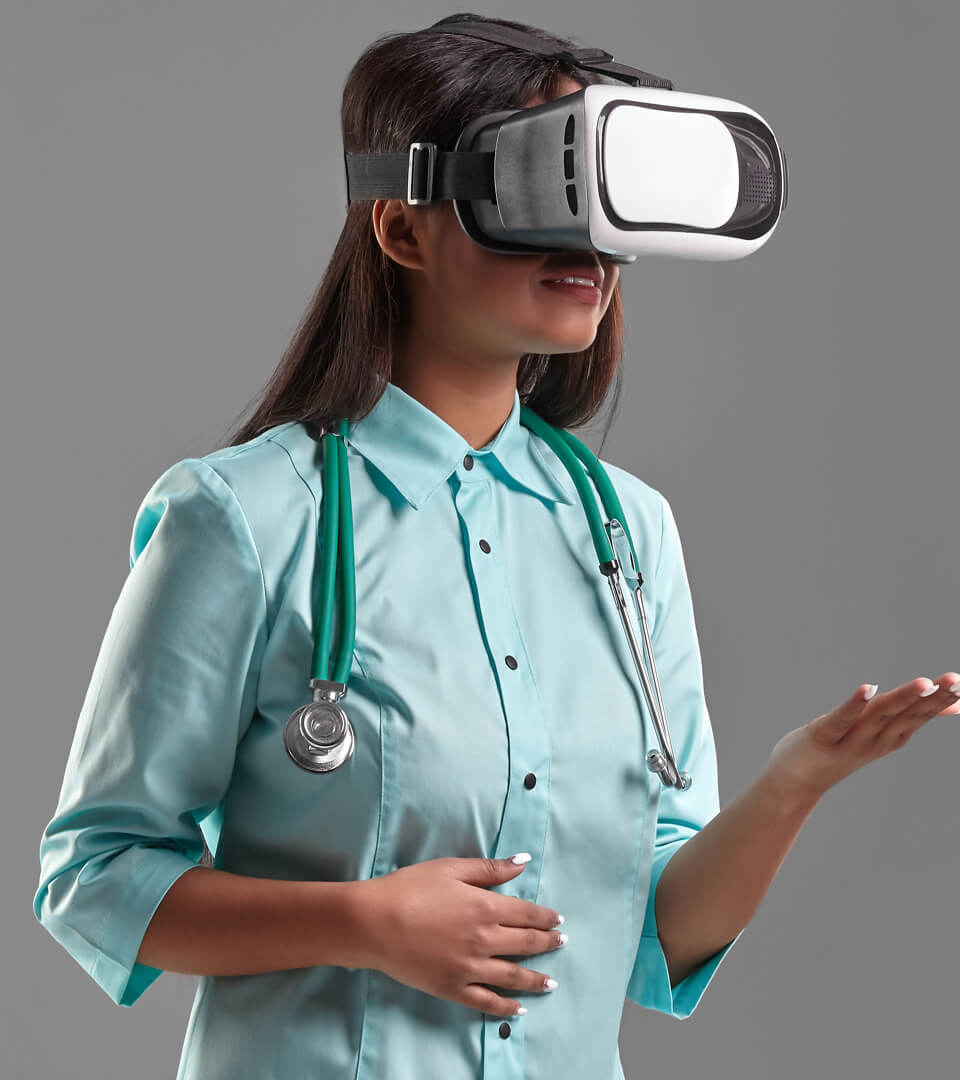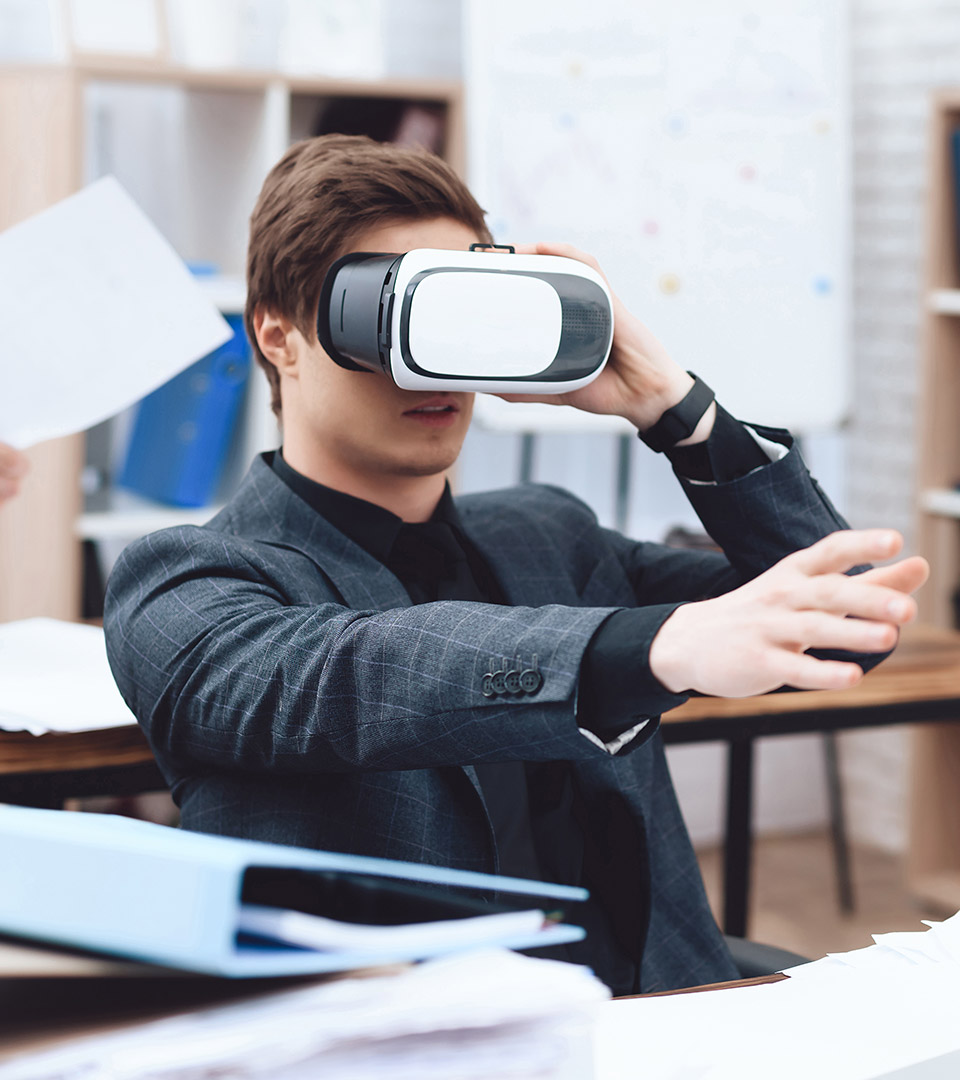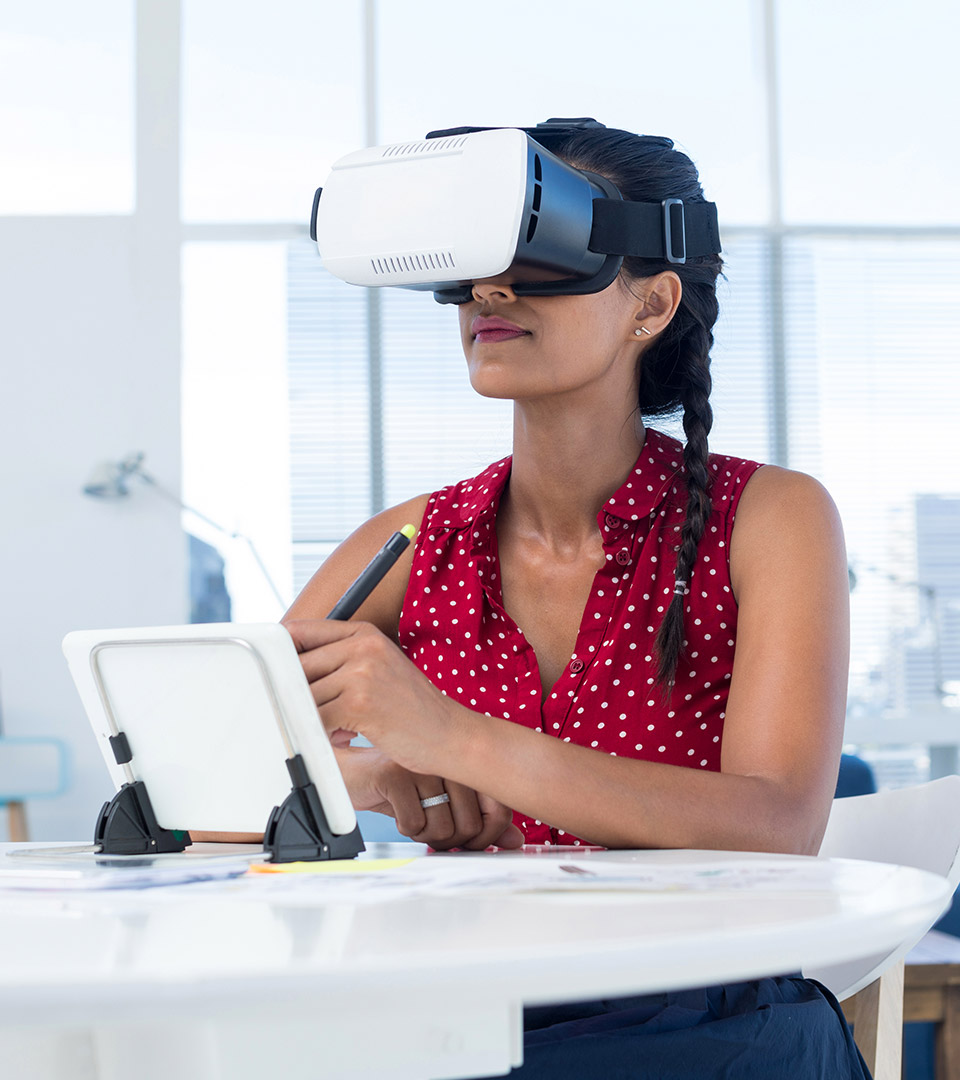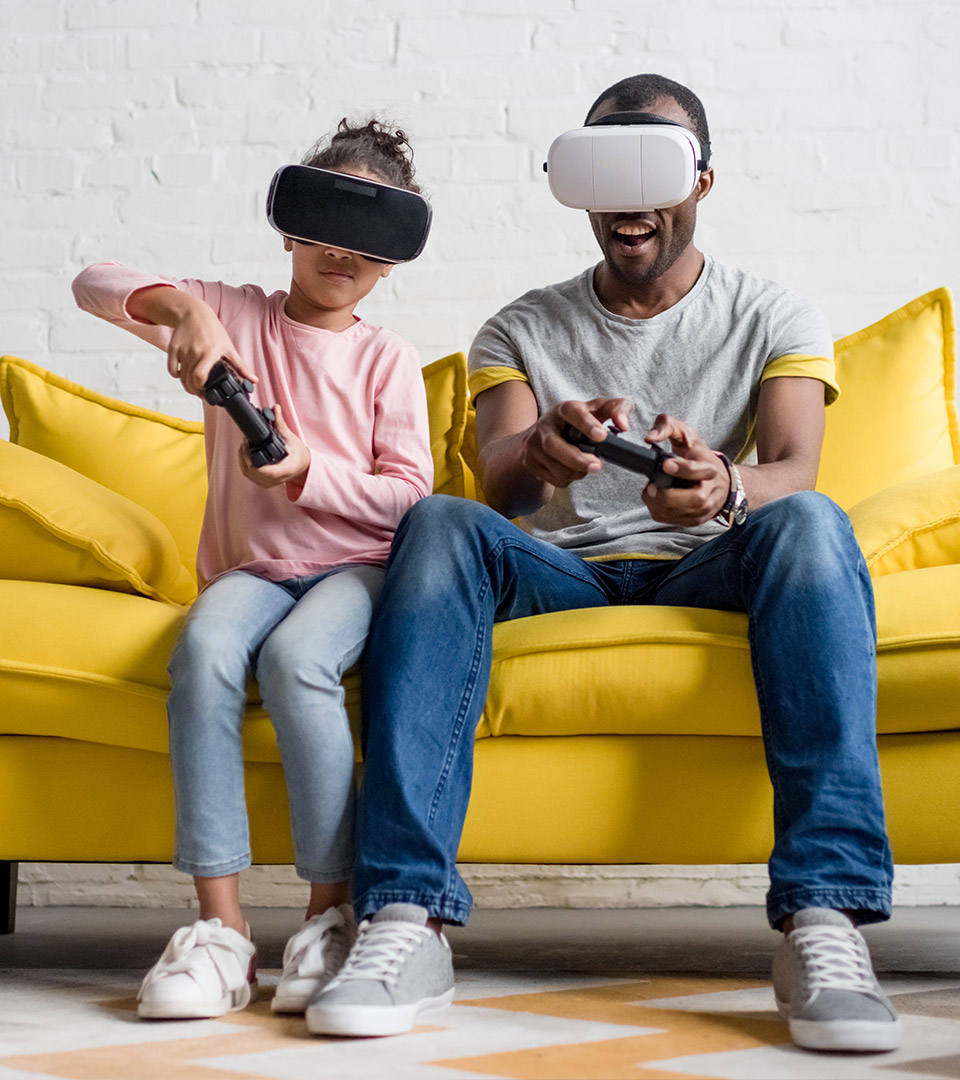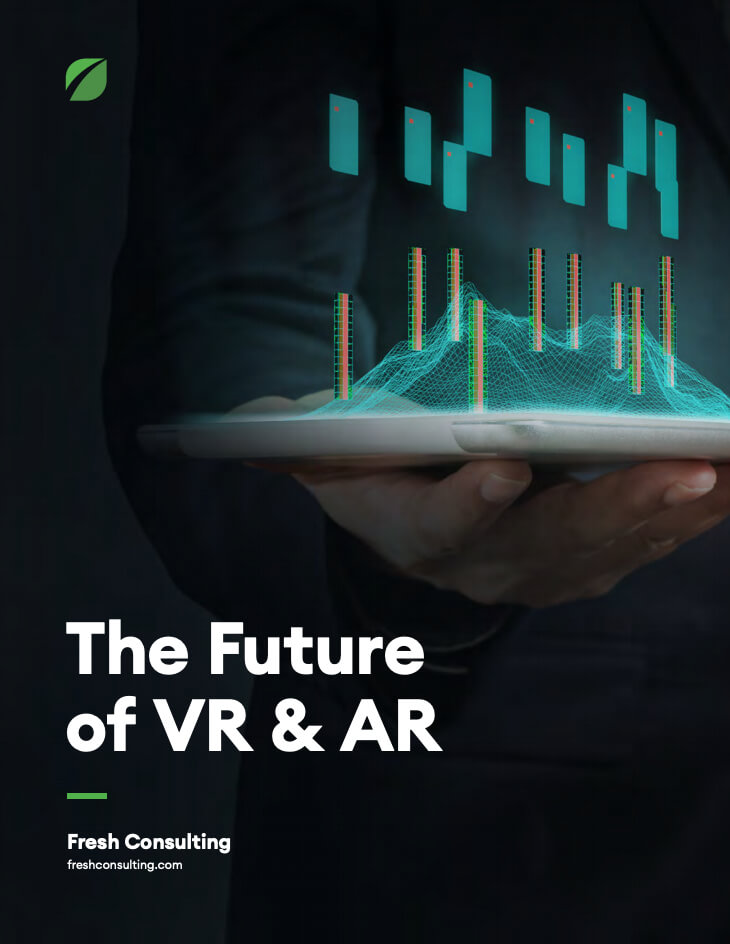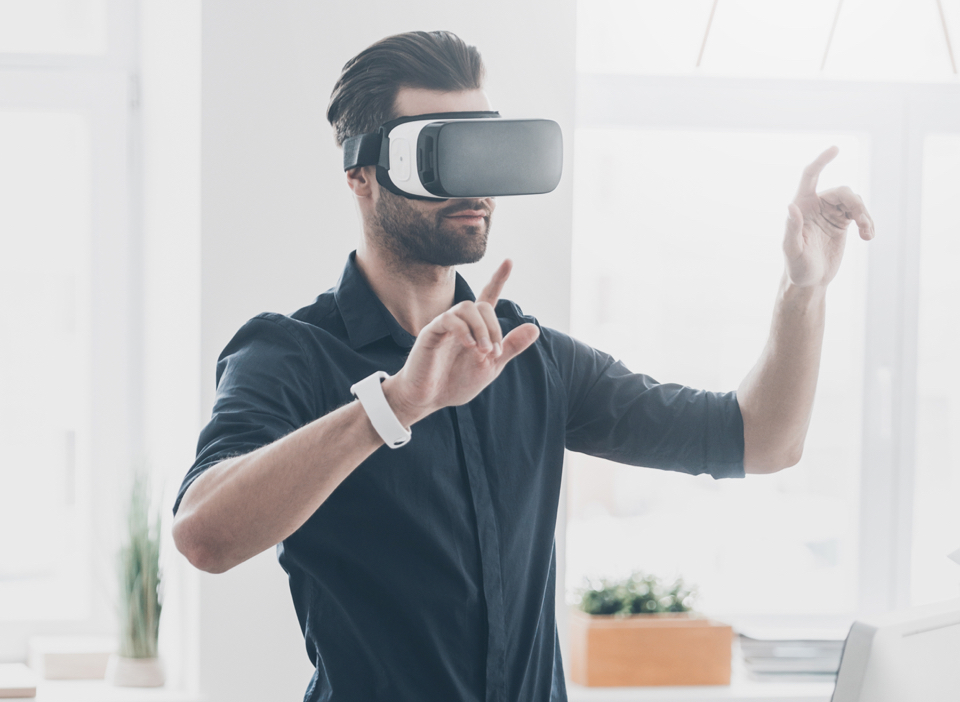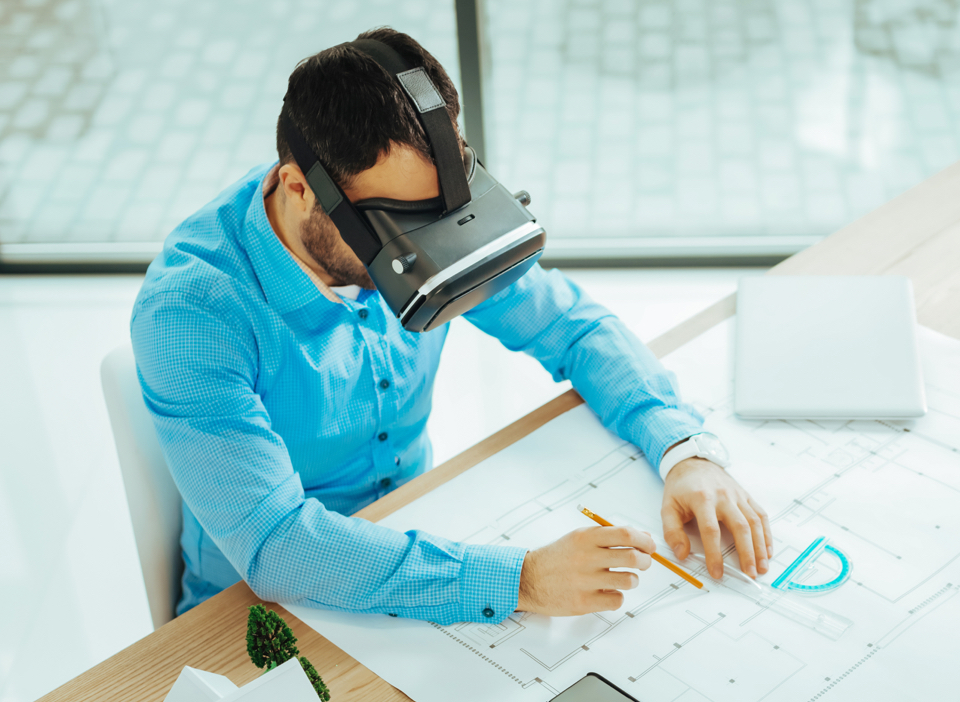Keeping in mind that Facebook paid $2 billion for Oculus, here’s what Mark Zuckerberg said when people doubted the future of Virtual Reality:
The Future of VR & AR
This website explores the immense potential of virtual and augmented reality to help you understand where the industry is going and what your business stands to gain from investing in this technology early on.
Leveraging the Power of Virtual and Augmented Reality
You’ve likely seen – or even tried out – a virtual reality (VR) headset at some point in the last few years. You’ve probably seen announcements about augmented reality (AR) capabilities that are now embedded in newer smartphones. This is because augmented, virtual, and mixed reality (MR) technologies are becoming more affordable and widespread, and the demand for the technology and people who can create it is high.
As augmented and virtual reality experiences are making their way into mainstream culture, the specific impact they will have on our lives and workplaces is becoming more and more obvious. Industries like healthcare and entertainment are already benefiting from the possibilities created by AR and VR. Statistics show that these technologies will continue to play an important role in other industries like retail, marketing, education, construction, real estate, and entertainment, among many others.
If what DigiCapital writes is true – that
Many businesses leverage virtual and augmented reality to make their workplaces more productive and engaging. These technologies are also being improved for marketing purposes. VR and AR have the potential to provide immersive experiences that give consumers a one-of-a-kind taste of what businesses offer.
If what DigiCapital writes is true – that
VR is for games [and] AR is for everything — AR will likely more widespread application. Whatever the case, we contend that both VR and AR have a future that is worth understanding and investing in.
Key Players and Technologies in the VR and AR Industries

The Current state of the Industry
It doesn’t seem like that long ago that we were hearing rumors of Google’s latest prototype – Google Glass – a pair of glasses that allowed the wearer to see digital information and programs overlayed on top of their natural surroundings. While Google Glass was an early-stage prototype that didn’t take off as expected, it paved the way for other companies to improve upon Google Glass’ mishaps.
The Future State of the Industry

As technology continues to advance at a rapid rate, VR and AR’s role in the way we interact with the world will grow.
For example, reaching consumers in new ways will be imperative for a variety of industries. AR and MR technologies can be used anywhere we work or play today. Any XR technologies can make distance less of a barrier, offering the ability to interact and communicate in ways that were not possible before.
Health professionals will be able to treat patients in a more personal manner and improve current practices through AR implementation; students will be able to learn in a more immersive and engaging way with VR courses.
Employees will be able to work together in more productive and natural environments that don’t confine work to a desk; and mixed reality experiences will make entertainment, news, and art more compelling for audiences.
However, there is still a “middleman” – a device that we use to access these applications. While we’ve nearly perfected this device, it still limits programs to a device’s physical hardware; programs can’t fully extend beyond the screen or integrate with our physical environment in a way that VR and AR will allow them to.
With XR, the line between the digital world and the physical one begins to blur to an even greater extent. Using this technology, businesses will be able to provide consumers with at-home experiences similar to in-person experiences. E-commerce is already widespread and the advances with AR/VR will continue to accelerate that movement.
The barrier between consumers and their devices is much smaller now than it used to be. We’ve gone from keyboard-only computers to keyboard and mouse, to touch screen interfaces. Users have the ability to interact with software directly.
For the past few decades, businesses have been striving to create open spaces for office workers to improve productivity and reduce the amount of time employees spend sitting at desks.
With VR and AR, we can work in digital spaces that are completely open, utilize the natural space around us, and collaborate with others in ways that weren’t previously possible. Teams will be able to meet and work together from different parts of the world through telepresence. Resources could be made available virtually instead of physically. Product designers will be able to work with each other by visualizing projects in 3D spaces, reducing the costs of physical prototyping and easing collaboration.
Augmented reality will likely eliminate some need for context switching. For example, information can be overlaid on a screen as an employee works so that they can stay immersed in their task rather than jumping between multiple windows in a computer.
The core of any prediction above is that the influence of VR and AR will continue to grow, and staying on the leading edge of innovation will be advantageous for companies and industries that are prepared.
Act Early on the Potential of VR/AR
XR related technologies offer the potential to create a seamless experience between the way we interact with computers, devices and the world around us.

I think people tend to be worried about every new technology that comes along. Critics worry that if we spend time paying attention to that new kind of media or technology instead of talking to each other [it’s] somehow isolating. But humans are fundamentally social. So I think in reality, if a technology doesn’t actually help us socially understand each other better, it isn’t going to catch on and succeed.
You could probably go all the way back to the first books. I bet people said ‘why should you read when you could talk to other people?’ The point of reading is that you get to deeply immerse yourself in a person’s perspective. Right? Same thing with newspapers or phones or TVs. Soon it will be VR, I bet.99
Humans are not only fundamentally social, but we’re also fundamentally productive and collaborative. Add to that we love to be entertained, and you can quickly see how XR technology strikes at the center of all of these natural tendencies.


